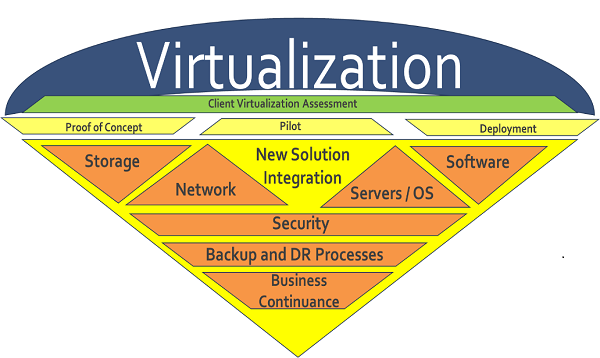The rising demands for data center service are leading to escalating capacities of the existing ones or installation of new ones.
But unfortunately, there does not seem to be sufficient focus on scaling back power needs or putting into effect power saving mechanisms.
Yet, the call of the day is to have a greener data center and efficiency involvements like virtualization.
“We expect our management to provide us with a reliable, high powered infrastructure that can support our projects”, says a software engineer. “But at the same time our CIO is also trying to grapple with the rising energy costs”.
One CIO however says, “We have to leverage the financial incentives and rebates offered to reduce the greenhouse emissions”.
A recent study reveals that presently cooling and electrical costs is a little over 40 % of a data center’s TCO (or total cost of ownership).
The fact is both the needs of scaling up the infrastructure and reducing the emission footprints can be met by adhering to the following cornerstones.
- Re-establishing resiliency – This means providing clients with the industry level service at all times.
- Minimizing energy expenses – There are several strategies. Better management of data storage, consolidation of infrequently used servers, removing from service unused servers, and purchasing energy efficient equipment are some methods.
- Recycling end of life equipment – The approach can include dissembling the components based on recyclable specs and transporting them to recycling units, and disposing off the hazardous components as per the prevailing rules and regulations.
Companies can adopt inexpensive methods as well to conserve energy. These can include:
- Switching off servers that are not performing any work
- Switching off air-conditioning in spaces that are over provisioned for cooling.
- Removing blockages that are obstructing air flow
A more proactive approach can include, installing new state-of-the-art chiller systems and air delivery systems. But of course, this can result in higher CAPEX.
Virtualization
Let us talk of a relatively new kind of approach.
This is called virtualization.
Virtualization can be of immense help simply because you will need far fewer servers.
It is well-established that whether you use servers for 10 % of the time or for 100 %, the actual difference in power consumption and heat generated between the two is not very significant.
“We have realized that a server that is scarcely utilized costs as much as the one that is fully utilized”, says an IT manager.
In a nutshell, virtualization is a technology that allows for several workloads, each having an independent computing platform to run on a single computing machine.
It is obvious how this method reduces power consumption.
With governments making it mandatory for IT companies to report on their carbon emissions, virtualization can prove to be a very effective strategy in reducing the carbon footprints.
By enabling virtualization of physical servers in a data center facility, along with networking storage and other infrastructure equipment, the facility stands to benefit in numerous ways.
Here is a list of some major benefits.
Reduced amount of heat build-up
With virtualized servers, you are working with less hardware. The result is obvious – the data center facility generates less heat.
Less work
The amount of hardware required to be maintained reduces considerably, leading to reduced maintenance work by the IT personnel.
“With virtualization, we are spending less time troubleshooting or updating firmware”, says an IT manager. The good news is several virtualization providers are having excellent tools that are user friendly with the capability to consolidate many functions into a single interface.
“Upkeep of servers in a physical IT environment is very time consuming”, says an IT administrator. “Most of our departments spend good time adding and managing new server workloads”.
Leading virtualization vendors have intelligent automation capabilities, which do away the need for IT staff to manually perform routine maintenance.
Quick provisioning of resources
This by far is the biggest advantage a data center facility experiences. With a few clicks, a customized physical server can be provisioned.
Control over outage and downtime
Virtualization enables a secondary data center to be configured to take care of the failed machines of a data center facility.
This kind of backup is absolutely indispensable because business continuity is essential.
Instead of taking more than a whole day to restore data, with virtualization, the IT staff achieves the same recovery results in less than 4 hours.
Yes, simplified IT management is one of the compelling reasons for a data center facility to transition to virtualization.
These are the days when enhanced responsiveness is critical capability. With virtualization, a company achieves a dynamic platform that helps them react faster to changes in a highly competitive market.
It is true that cutting down of expenses will remain the key driver for virtualization. But a data center will seize this opportunity to also ensure business continuity, simplify management, reduce carbon footprints, and reallocate IT resources to more urgent workloads.






 Live Chat
Live Chat